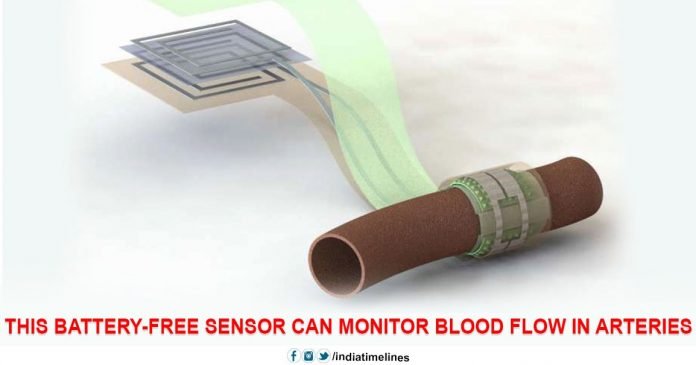
Biodegradable Sensor Can Monitor Blood Flow in Arteries: Stanford scientists have developed a biodegradable, battery-free sensor that can monitor blood flow through the artery, which helps doctors to assess the success of blood vessel surgery. The device does not need to be removed and if there is a patient then the patient can warn the doctor. Interruption, the researchers said.
Biodegradable Sensor Can Monitor Blood Flow in Arteries
An assistant professor at the US Professor of Blood Flow at Paige Fox, Stanford University is important in many medical specialties, so a wireless biodegradable sensor can affect many areas including vascular, implantation, reconstruction, and cardiac surgery. As we strive to take care of patients from the entire Bay Area, Central Valley, California and beyond, it is a technique that will allow us to expand our care without the need for face-to-face visits or trials.
Monitoring the success of surgery on blood vessels is challenging because the first signs of trouble are often too late. Until that time, the patient often needs extra surgery, which carries the same risk as the original procedure. This new sensor can allow doctors to keep an eye on a treatment vessel remotely, creating opportunities for earlier intervention.
The sensor wraps around the healing vessel, where the blood flutter pushes the past to its inner surface. As the shape of that surface changes, it changes the ability to accumulate the electric charge of the sensor, which the doctor can remotely see outside the body from a device located near the skin.
Biodegradable Sensor Can Monitor Blood Flow in Arteries, This battery-free Sensor can monitor blood flow in arteries
This tool solves the sensing of the antenna by pinging an antenna like an ID card scanner. In the future, this device can come in the form of stick-on patches or can be integrated into other technologies, such as a wearable device or smartphone.
The researchers first tested sensors in an artificial setting where they pumped air through an artery-shaped tube to mimic blood flow.
Stanford’s former postdoctoral scholar Surgeon Yukitoshi Kaizawa also implanted the sensor around the artery in a rat. Even on such a small scale, the sensor reported successfully the flow of blood to the wireless reader.
Researchers are now looking for the best way to transplant the vessels to sensors and refine their sensitivity. They are also seeing what other ideas will come up with interest in this interdisciplinary field.






























